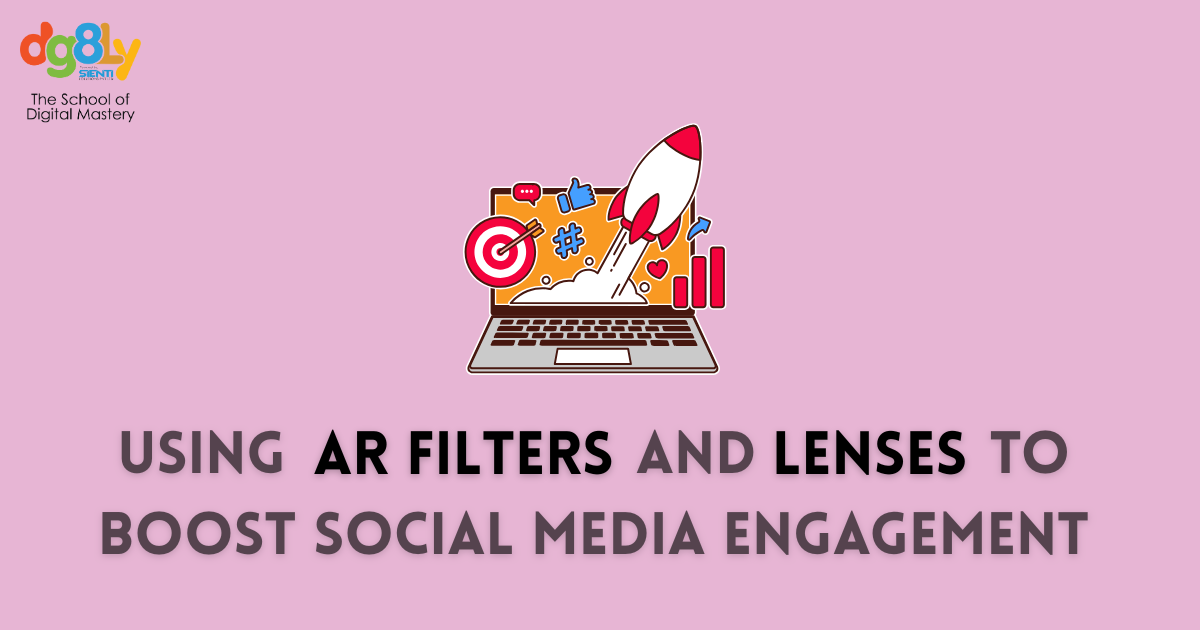Using AR Filters and Lenses to Boost Social Media Engagement
In the fast-changing world of social media, grabbing your audience’s attention is becoming more challenging every day. One of the most creative ways brands and creators are doing this is by using Augmented Reality (AR) filters and lenses. These fun, interactive effects allow users to overlay digital elements onto their real-world environment, making content more exciting and shareable.
If you’ve ever seen Instagram or Snapchat filters that add sunglasses to your face, turn your background into a dreamy sunset, or make products “come alive,” you’ve already experienced AR in action. But beyond the fun, AR filters and lenses can be a powerful tool for boosting social media engagement.
What Are AR Filters and Lenses?
-
AR Filters: Graphics or animations that appear over photos or videos in real-time.
-
AR Lenses: More advanced effects that often track movement and interact with the user’s facial expressions or surroundings.
Popular platforms like Instagram, Snapchat, Facebook, and TikTok allow creators and brands to design custom AR filters that followers can use and share.
Why AR Filters Work for Engagement
-
Interactive & Fun
People love playing with AR filters because they make content creation easy and entertaining. This increases the chances of users spending more time with your brand. -
User-Generated Content (UGC)
When users apply your custom AR filter, they often post it on their own profiles, giving your brand free exposure. -
Brand Awareness
Creative AR effects can incorporate your logo, brand colors, or product visuals subtly, helping people remember your brand. -
Viral Potential
A unique and fun AR filter can quickly spread across social media, reaching thousands (or even millions) of users. -
Storytelling
AR filters can be used to showcase products in action, tell a brand story, or celebrate an event or festival in a visually engaging way.
How Beginners Can Start Using AR Filters
-
Choose the Right Platform
Decide where your audience spends most of their time — Instagram, Snapchat, or TikTok — and focus on that platform first. -
Use AR Creation Tools
Free tools like Spark AR Studio (for Instagram and Facebook) or Lens Studio (for Snapchat) allow you to create custom AR effects without advanced coding knowledge. -
Keep It Simple
As a beginner, start with simple filters like color overlays, animations, or text-based effects before moving to complex 3D elements. -
Make It Relevant to Your Brand
If you’re a coffee shop, try a filter that adds steam and aroma effects to a cup. If you’re in fashion, create a lens that lets people “try on” accessories virtually. -
Promote Your Filter
Encourage followers to try your filter and tag your account. Offer incentives like giveaways for the most creative use.
Examples of AR Filter Ideas for Businesses
-
Restaurants: Interactive food-themed face filters.
-
Beauty Brands: Virtual makeup try-ons.
-
Travel Agencies: Destination-themed backgrounds.
-
Educational Brands: Fun quizzes or fact overlays.
Conclusion
AR filters and lenses are more than just playful tools — they’re an innovative way to build engagement, boost brand visibility, and connect with your audience on a deeper level. By adding creativity and interactivity to your social media strategy, you can stand out in a crowded feed and encourage followers to participate in your brand story. For those looking to learn these skills and implement them professionally, enrolling in the best digital marketing course in Kochi can give you the right training and tools to master AR marketing effectively.


